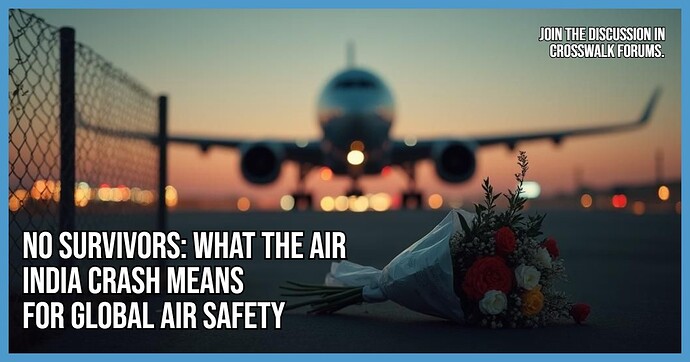No Survivors: What the Air India Crash Means for Global Air Safety
A modern Boeing 787 crashed five minutes after takeoff—with no survivors. What went wrong, and should global flyers be concerned?
#AirIndiaCrash #GlobalAirSafety #christianforums #crosswalkforums #forums #crosswalk #faithcommunity #faithforums
In what’s now confirmed as the first fatal crash of a Boeing 787, an Air India flight bound for London went down in Ahmedabad, killing all 244 people on board. The plane crashed into a residential area just minutes after takeoff, leaving no survivors and igniting fires across buildings, streets, and even a medical college hostel.
Many of the victims were Indian and British citizens, and the shock has been felt around the world. With the Boeing 787 known for its cutting-edge safety systems and performance record, experts are scrambling to understand how this could happen. Early footage showed the aircraft nose-up but not climbing—a detail that may hold clues once the black box is recovered.
The crash raises a range of difficult questions. How prepared are airlines for takeoff emergencies in dense cities? What went wrong with a model previously regarded as ultra-reliable? And how long before we get real answers—not just from the airline, but from Boeing?
As aviation becomes more global and airspace more crowded, should safety expectations be even higher than they are now?
And finally—how do we grieve responsibly for a loss this wide-reaching, and hold institutions accountable without resorting to speculation?
“Our thoughts and deepest condolences are with the families and loved ones of all those affected by this devastating event.” —Air India Chairman Natarajan Chandrasekaran
Read the full article:
